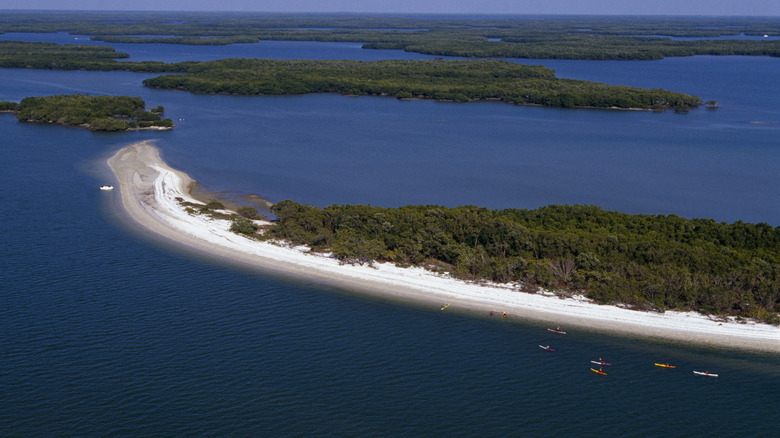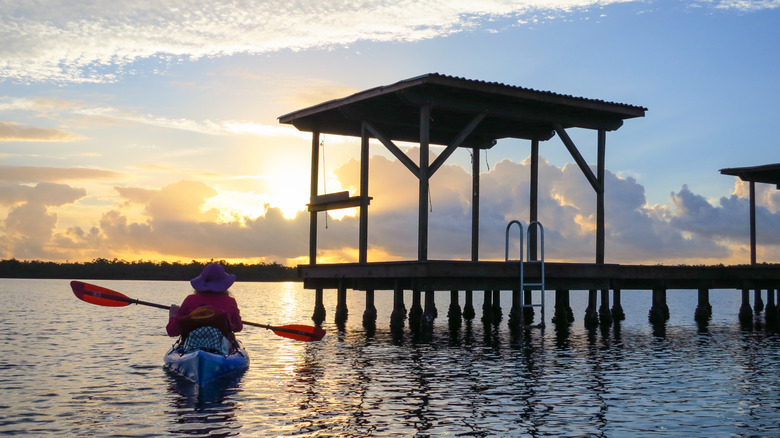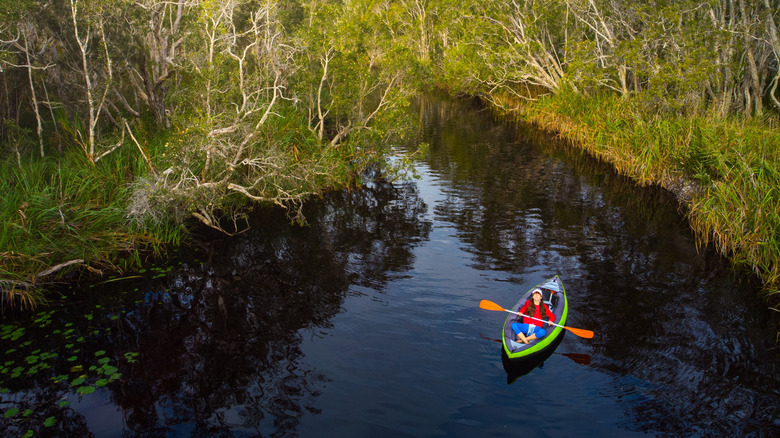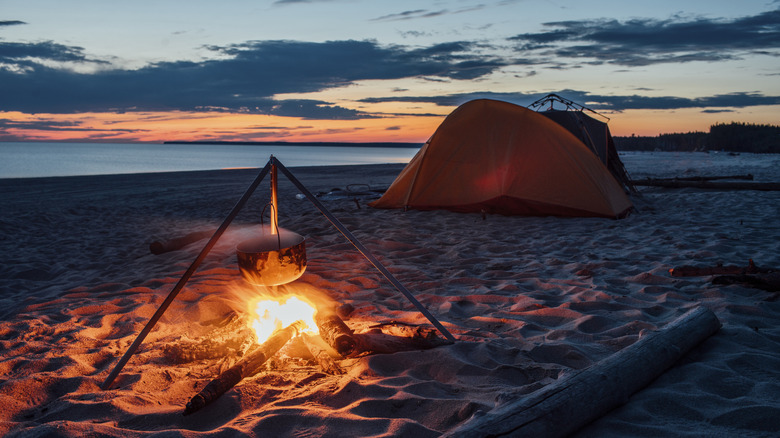A Secret Weeklong Florida Outdoor Adventure Offers Crowd-Free Beaches In One Of America's Most Wild Places
There's so much to discover about the Florida Everglades. Locals will tell you that it was once a vast ecosystem spanning from south of Orlando all the way to the southern tip of Florida. Everything was connected by the once-unimpeded flow of freshwater, which slowly fed the marshes, cypress wetlands, coastal mangrove forests, and the estuaries to the south. Today, the Everglades National Park protects a tiny sliver of this area, yet it's still one of America's most endangered national parks. Most visitors see the sawgrass sloughs of the northern Everglades, but there's so much more to this beautiful area than that!
One part of the Everglades that few people experience is the beautiful coastal backcountry. It's made of thousands of islands divided by winding mangrove-lined creeks, bays of crystal-clear water, and deserted sandy beaches on the outer islands. The area is far from human civilization, and the amount of wildlife you'll see is breathtaking. There are fish jumping, dolphins chasing them, manatees munching on seagrass, both wild alligators and crocodiles living side by side, and birdlife like nowhere else.
There are no towns, roads, or hiking trails in the Everglades. It's one of the largest sections of pure wilderness on the Eastern Seaboard. To get into the backcountry, you need a small boat to explore the little creeks and shallow areas. Kayaking and canoeing are the best ways, although many have done it in small motor skiffs or pocket-sized sailboats. You can explore the area for a day or a week, depending on how much you want to see. If you want to see it all, then the 99-mile-long Everglades Wilderness Waterway is the adventure you seek.
A journey deep through the Everglades wilderness
The Everglades Wilderness Waterway is a paddling route through the backcountry from Everglades City to Flamingo. Experienced paddlers can cover 8 to 12 miles a day, meaning the trip will take at least eight days. Larger touring kayaks or canoes are preferred since they have the capacity to carry all your gear and water. But you don't have to do the entire 99-mile trek. Fun, shorter adventures can be had from either end, from leisurely afternoon paddles to one or two-night camping adventures.
There are 45 backcountry campsites in the park, consisting of three types: ground, beach, and chickee sites. Ground sites are the least interesting; they tend to be inland on small, buggy, dry patches. Beach sites offer chances to stretch your legs and see some of the most beautiful — and deserted beaches — in Florida. Chickee campsites are over-water platforms in the middle of bays and rivers where you can pitch a tent under an awning, with fish jumping all around and a nice breeze to keep the bugs away. (Just note that you need a freestanding tent for chickee sites, since you can't hammer a stake into a wooden platform.)
What permits do you need for the Everglades Wilderness Waterway?
You can't just venture out into the Everglades. Before setting out, you must get a wilderness permit and reservation for each campsite online or at a ranger station. At the time of this writing, the fee is $21 plus $2 per person per night, plus the park entrance pass, which is $35 for a person and vehicle.
If you wait too long during the busy season, the best campsites can fill up. If you don't bring your own kayak, some outfitters rent boats for the trip and shuttle you back at the end; one such supplier is Everglades Adventures in Everglades City.
No matter how you do it, the Wilderness Waterway is a trip for experienced paddlers because self-sufficiency is paramount. There's no cell service and little help available, and getting lost in the winding maze of islands is easy to do.
Planning your Everglades Wilderness Waterway adventure
You can plan your trip heading north or south, but the endpoints are always the same. On the north end is the Gulf Coast Visitor Center in Everglades City. It's closed for construction until fall 2025, but there are alternate launch sites around town. Everglades City is closer to the west coast city of Naples and the free-to-enter Big Cypress National Preserve, but it still borders the Everglades. At the south end of the route, there's the newly rebuilt Flamingo Visitor Center, 50 miles southwest of Homestead.
If you plan your trip southbound, you can enjoy the facilities at the brand-new Flamingo Lodge. Northbound boats, on the other hand, have their choice of inns and resorts in Everglades City. After a week spent in the Everglades camping on wooden platforms and beaches, a hot shower and a restaurant-prepared meal will feel very welcome indeed. As with any one-way boating adventure, the challenge will be finding someone to pick you up and get you back to your car. It's three hours by car between the two visitor centers, and both are in rural areas where rides are not readily available.
Weather is a critical factor for this trip. Much of the route is inside protected mangrove creeks, but some open waters and broad rivers must be crossed. Wind and tide can slow your progress considerably. The dry winter season into spring is a prime time to visit the Everglades, providing the mildest temperatures, lower humidity, less chance of thunderstorms, and the fewest mosquitoes and noseeums. Still, there's a risk of temperature extremes, squalls, and an enormous amount of hungry insect life year-round. The park's boater education course, mandatory for motorized vessel operators, provides excellent information about boating in the park.



